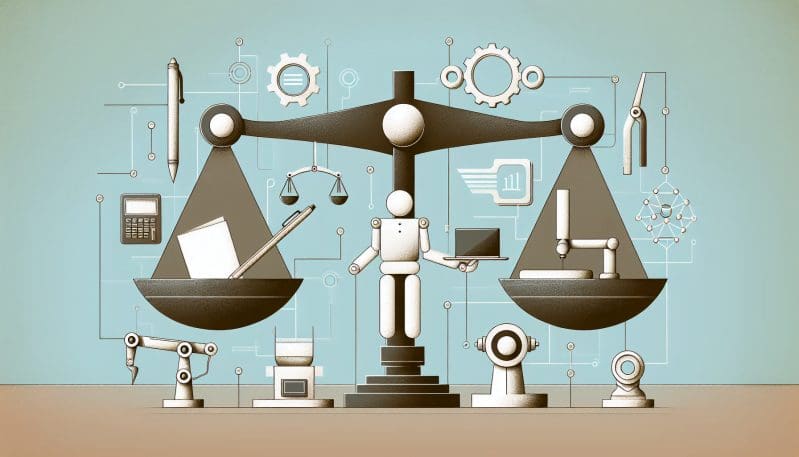Redefining Bargaining Power: The New Rules of Worker Negotiations in a Tech-driven Economy
- Home
- Redefining Bargaining Power: The New Rules of Worker Negotiations in a Tech-driven Economy

- Editors Desk
- February 2, 2024
- 0 Comments
As we navigate deeper into the 21st century, the tremors of technological advancement are being felt across all sectors of the economy—reshaping the landscape of work, the worker, and the workplace. For those of us here at No Worker Left Behind, understanding these seismic shifts is more than a commitment—it’s a call to arms. This blog post exists to equip workers with the knowledge to navigate and leverage new power structures to ensure fairness in wages, benefits, and working conditions.
The advent of automation, artificial intelligence (AI), and on-demand gig platforms has fundamentally altered the terrain upon which workers and employers stand. These innovations, while driving efficiency and growth, pose unique challenges in labor negotiations. Workers today must adapt to these changes, retooling their strategies to suit a rapidly evolving job market.
Traditional collective bargaining, which has historically been the lifeline of worker negotiations, is now only a piece of the puzzle. The rise of the gig economy, for instance, has led to a more atomized workforce. This dispersion of labor, while offering flexibility and autonomy, can also dilute collective bargaining power. In such a landscape, technology not only disrupts jobs but also the very means by which workers advocate for their rights.
However, not all is grim. Digital labor platforms, if harnessed correctly, can be powerful for collective action. Social media and app-based communication allow for new forms of worker solidarity that transcend geographical limitations. Organizing and mobilization can occur at unprecedented speed and scale, offering novel and effective ways to negotiate en masse.
The 21st-century workplace also calls for alternative negotiation strategies. Empowerment through education, skill development, and networking are essential. Workers must become fluent in the language of technology, enabling them to demand fairer terms based on the advanced skills they bring to the table. Additionally, leveraging data-driven insights about labor markets can strengthen workers’ cases in negotiation scenarios.
Case studies from tech-adjacent fields offer enlightening examples of successful negotiation tactics in the new economy. For instance, concerted social media campaigns have empowered workers to secure better contracts, and app-based unions have provided robust platforms for worker advocacy. These examples not only inspire but also instruct on the practical steps needed to balance the scales.
As a Labor Market Futurist and advocate for the undervalued workforce, I cannot stress enough the importance of adaptability and innovation in worker negotiations. The rules have changed, and so too must our strategies. The time to redefine bargaining power is now, ensuring that in a tech-driven economy, no worker is left behind.
In conclusion, the power dynamics in the labor market may be shifting, but they are far from set in stone. Workers possess more tools and resources than ever to assert their value and demand equity. By embracing the technologies that are transforming our world, we can use them not as instruments of division, but as unifying forces for a fairer and more just workplace for all.

Leave A Comment